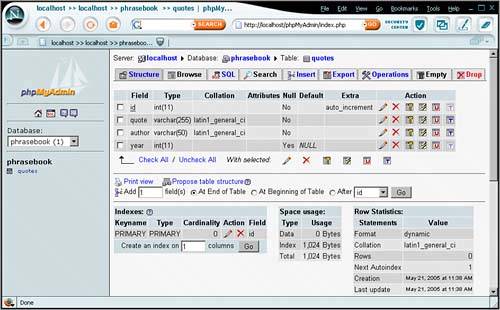This chapter tackles quite a number of databases and shows the basic operations with them: connecting, sending SQL statements, and evaluating the return values. No matter what your database-driven web application must do, it always has to do these steps.
To have some test data, we created a database called hoshmand in the relational database management system (RDBMS) and put a table called quotes in there. This table consists of four fields:
-
idAn integer value that is increased by 1 for each new entry entered into the database. Depending on the database system, the data type is either calledIDENTITY,auto_increment, or something similar. -
quoteThe quote, as aVARCHAR(255); this length works with all systems. -
authorThe person who produced the quote, as aVARCHAR(50). -
yearThe year the quote has been produced (sometimes, this is highly speculative), of typeINT.
Every database system comes with either management tools or third-party products available. For instance, the PHP-based phpMyAdmin (http://www.phpmyadmin.net/) shown in Figure 7.1 offers very good access to a MySQL installation.
Figure 7.1. Managing a MySQL installation using phpMyAdmin.
[View full size image]
